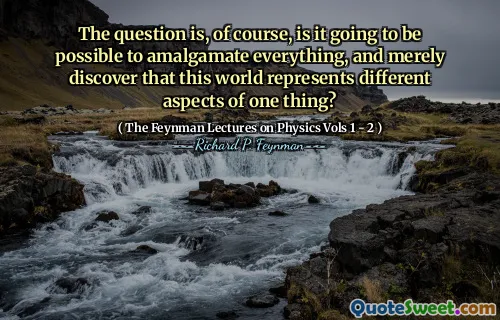But in the dynamic space of the living Rocket , the double integral has a different meaning. To integrate here is to operate on a rate of change so that time falls away: change is stilled...'Meters per second ' will integrate to 'meters.' The moving vehicle is frozen, in space, to become architecture, and timeless. It was never launched. It never did fall.
In "Gravity's Rainbow," Thomas Pynchon explores the concept of integration in the context of a moving rocket, suggesting a unique interpretation of mathematical principles. Here, integration transforms the notion of continuous change over time into a static existence. Instead of seeing a rocket as something in motion, Pynchon presents it as an architectural entity that transcends time and space, where the fluidity of speed becomes a moment of permanence.
The passage portrays the idea that within the living rocket, the passage of time ceases to hold meaning. By integrating the rates of change, the rocket is perceived not as an object that has launched or fallen, but as a fixed construct within a timeless framework. This imagery invites readers to rethink the relationship between motion, time, and being, highlighting the duality of existence and the perception of reality shaped by change.

